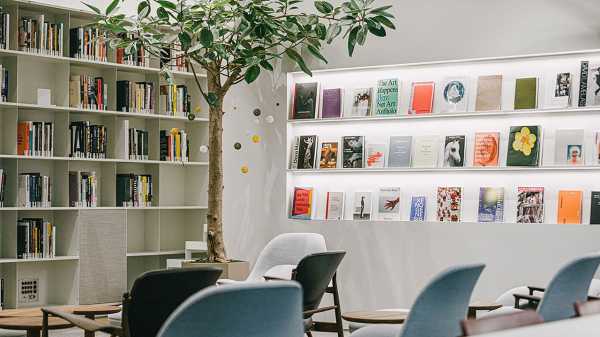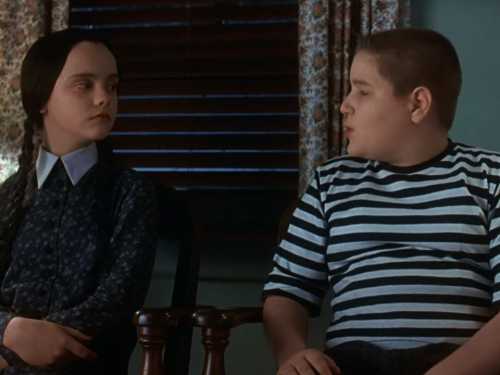
The summer of 2022 peaked early, in June, with a trip to South Korea for the Seoul International Book Fair. Founded in 1954, the S.I.B.F. was held fully in person again for the first time since the pandemic discouraged large literary gatherings, or moved them mostly online, in 2020. Masked, jet-lagged, and functionally illiterate, I wandered around the exhibits in Hall A of COEX (the equivalent of the Javits Center)—almost two hundred book-related enterprises, including publishers from China, Canada, France, and Germany—and was surprised to be greeted by name. It was not that my fame had preceded me; I was simply one of very few non-Asians in the room. I was also recognized at the booth of my publisher, Maumsanchaek, by Hanbi Na, a young woman with dyed gray hair, who turned out to be an editor. The booth displayed copies of the Korean translation of my book about copy editing at The New Yorker. Eustace Tilley is on the cover.
Before flying to Korea (an eighteen-hour direct flight from New York), I had received an e-mail from Yumi Hwangbo, the director of Sojeonseolim, a private library in Seoul, telling me that she had acquired a set of bound volumes of The New Yorker and inviting me to visit. Apart from dining in Koreatown and attempting to learn the Korean alphabet on Duolingo, I was not overprepared for Seoul, which is a huge city. Knowing that the familiar thick black-bound volumes of The New Yorker, which I had consulted in libraries and in the magazine’s own offices, were in the holdings of a library in Seoul gave me an anchor there. At the book fair, I was interviewed about the magazine business by a Korean gentleman, through an interpreter, before a modest crowd that yet managed to include a man profoundly, voluptuously asleep in a front-row aisle seat. At one point, the interviewer said that he had been meaning to ask me why so many new magazines had such short life spans, but, because I had just mentioned that in 2025 The New Yorker will turn one hundred, he had decided to change his line of questioning. My Korean translator, Young-Jun Kim, was in the audience, but I didn’t get to meet him. The moment the event was over, a young artist who goes by the name Blanc (Soyeon Na) rushed up with a gift: her version of a New Yorker cover for an imaginary magazine called The Seouler.
The next day, I met Yumi for the short trip to Sojeonseolim, in the Gangnam district. Sojeonseolim, Yumi explained, means “a forest of books in white brick.” The building, originally designed as an art gallery, is a stark modern structure with a white brick façade and giant cantilevered squares of glass. It stands out on a street that is otherwise a jigsaw puzzle of shop fronts and vertical signs. Yumi led me along a corridor lined on one side by white shelves, bare except for some ivy curling down from flower boxes, and up a flight of stairs. The reading room features a pristine selection of books—Korean literature, world literature in translation, sumptuous art catalogues—and, at the center, an ostrich-size wooden sculpture of the goose that laid the golden egg, which also serves as a perch for reading. There are nooks along the walls for state-of-the-art designer reading chairs. They have adjustable backs and footrests, like the seats in a cineplex or a dentist’s office, as well as high-tech lamps. One chair was designed specifically for viewing a screen from a comfortable distance.
An exhibition devoted to Cervantes was up: rare editions of “Don Quixote” lay open on a counter, each tantalizing volume accompanied by a pair of gloves so that a visitor might turn the pages without leaving a smudge. A new exhibit opens in the fall to celebrate the centenary of Joyce’s “Ulysses.” The Forest of Books in White Brick was like a cross between the Morgan Library, in Manhattan, and the Center for Fiction, in Brooklyn, combining a priceless rare-book collection and a hipster sensibility.
In a courtyard were two swing sets. “Even something for the kids!” I said. “No,” Yumi corrected me. “That’s for us.” It turns out that swinging has been popular in Korea for centuries, as a form of light exercise, especially for women. Then Yumi opened a door to an inner room devoted to a purely adult pleasure, very popular in Korea: an exquisite small bar, with high-end whiskeys, brandies, and liqueurs arranged on the shelves behind it.
When the library opened, in February of 2020, Yumi said, it received some criticism as a large expenditure for something that catered to only a privileged few. (A limited membership package is a hundred thousand won, or about seventy dollars. A half-day pass, as to a spa, is thirty thousand won, or about twenty dollars.) She shrugged as if this were inevitable. The library was financed through a humanities foundation started by Wonil Kim, the inventor of an apparatus that improved the game of virtual golf. His company, Golfzon, was a big success in Seoul, where it is hard to get to an actual golf course, and screen golf took off worldwide, like karaoke, making Kim a multimillionaire.
While the library is a direct beneficiary of virtual golf, it can also be seen as a late flowering of a cultural heritage: Koreans have historically regarded reading as a luxury. Before leaving Seoul, I visited the Secret Garden at the Changdeokgung Palace, where I admired the King’s reading room: a beautifully preserved centuries-old pavilion with a view of juniper trees and a lily pond. I’m sure I could make good progress on my Duolingo there.
I had been wondering where the New Yorker archive fit in at Sojeonseolim, and finally Yumi led me to the periodicals section. It was the platonic ideal of a magazine rack, an entire wall showcasing glossy publications from around the globe: Vogues from Italy and Singapore, Granta from the U.K., Monkey from Japan, and, yes, The New Yorker—a recent issue bore the subscription label of an address in Springfield Gardens, in Queens. While Yumi was putting together a packet of souvenirs for me—postcards, pencils, bookmarks with the Sojeonseolim imprint—I asked, “Where are the bound volumes of The New Yorker?”
Yumi looked surprised. “They are in storage,” she said. ♦
Sourse: newyorker.com






